Eleanor of Aquitaine, a prominent figure of the Middle Ages, holds a revered place in history as one of the most influential women of her time. Born in the 12th century, Eleanor’s remarkable life was defined by her powerful positions, strategic alliances, and indomitable spirit.
As the Duchess of Aquitaine, Queen Consort of France, and later Queen Consort of England, Eleanor wielded immense political influence and played a pivotal role in shaping the destiny of two great European nations. Known for her intellect, beauty, and assertiveness, Eleanor defied societal norms and became a trailblazer for women’s empowerment. Her legacy as a political strategist, patron of the arts, and symbol of female power continues to captivate and inspire to this day.
Table of Contents
Who Was Eleanor of Aquitaine? The Early Life and Noble Lineage
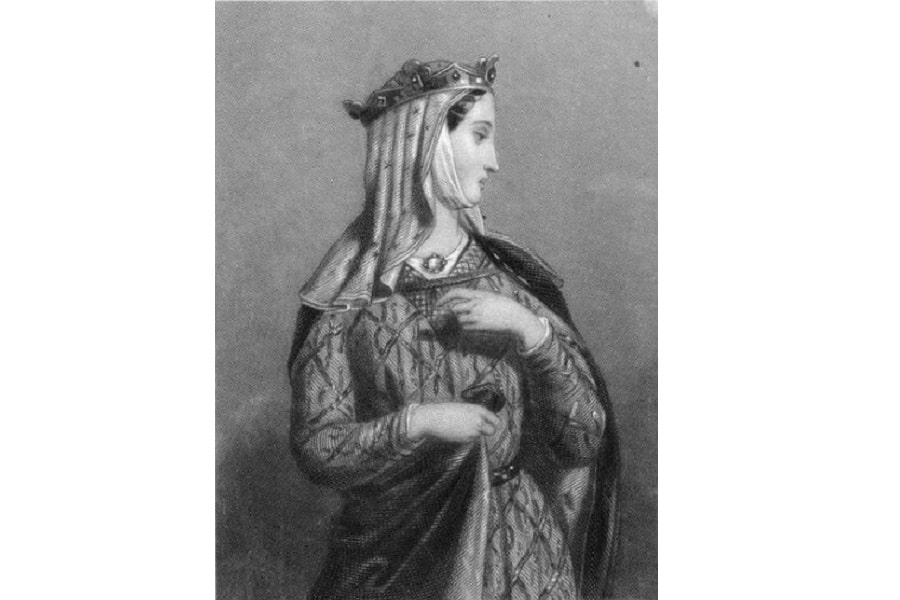
Eleanor of Aquitaine was born in 1122, the eldest daughter of Duke William X of Aquitaine and Aenor de Châtellerault. Her birth took place in the heart of southwestern France [1], a region known for its wealth, cultural diversity, and vibrant courtly traditions. From an early age, Eleanor’s noble lineage destined her for a life of prominence and influence.
Raised in the splendid courts of Aquitaine, Eleanor received an education befitting her status. She was tutored in the arts, literature, music, and etiquette [6], equipping her with the refined skills necessary for a future queen. The courtly atmosphere in which she was immersed fostered her appreciation for the ideals of chivalry, courtly love, and troubadour poetry, which would later come to define her reign.
The Wealth and Prestige of Aquitaine
Aquitaine, the land over which Eleanor would eventually reign, held immense wealth and prestige during the medieval period. Situated in what is now modern-day France, Aquitaine encompassed vast territories known for their fertile lands, bustling trade routes, and prosperous cities [5]. Its strategic location along the Atlantic coast allowed for thriving maritime commerce and cultural exchanges with neighboring regions.
Eleanor’s inheritance of Aquitaine at the tender age of 15 bestowed upon her immense power and control over a significant portion of Western Europe [2]. The duchy of Aquitaine encompassed territories that included present-day regions of France, as well as parts of Spain and Portugal. The wealth and resources of Aquitaine, coupled with its position as a cultural crossroads, further elevated Eleanor’s standing and influence in the medieval world [2].
Marriage to Louis VII of France: A Union of Power
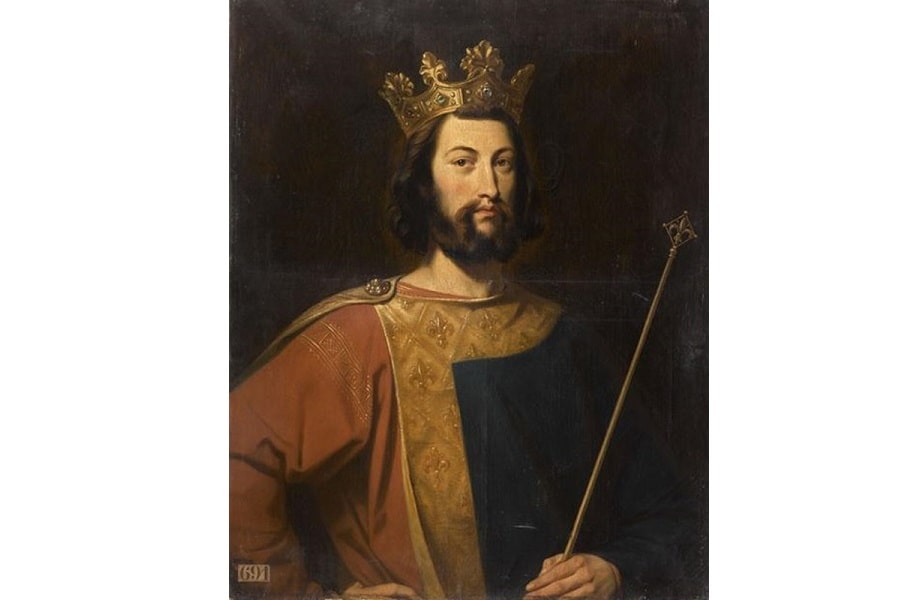
At the age of 13, Eleanor married Louis VII, the King of France. The union between Eleanor and Louis was a political alliance intended to strengthen ties between the Duchy of Aquitaine and the Kingdom of France [3]. The marriage brought together two powerful realms and solidified Eleanor’s position as the Queen of France.
As Queen Consort of France, Eleanor held considerable sway over courtly affairs and played an active role in the administration of the kingdom. However, differences in personality and aspirations gradually strained the marriage. Eleanor’s independent nature clashed with Louis’s more reserved and pious character, leading to discord and discontent within the royal couple [3].
Eleanor’s Impact on French Society and Culture
Eleanor’s presence in the French court had a profound impact on the cultural and intellectual landscape of the time. She fostered an environment that celebrated the ideals of courtly love, inspiring troubadours and poets to compose works in her honor. Eleanor’s patronage of the arts and literature further enhanced the prestige of the French court and contributed to the development of the troubadour tradition, which emphasized themes of chivalry, romance, and idealized love [7].
Under Eleanor’s influence, the court became a hub of cultural exchange, attracting scholars, artists, and intellectuals from across Europe [7]. The courtly ideals and refined tastes promoted by Eleanor had a lasting impact on French society, leaving a legacy that would shape the cultural fabric of the era.
Eleanor’s marriage to Louis VII marked the beginning of her remarkable journey, laying the foundation for her subsequent reigns and the indelible mark she would leave on history. Her upbringing in the courts of Aquitaine, along with her influential marriages, played a pivotal role in shaping her character and setting the stage for her accomplishments as one of the most remarkable queens of the Middle Ages [5].
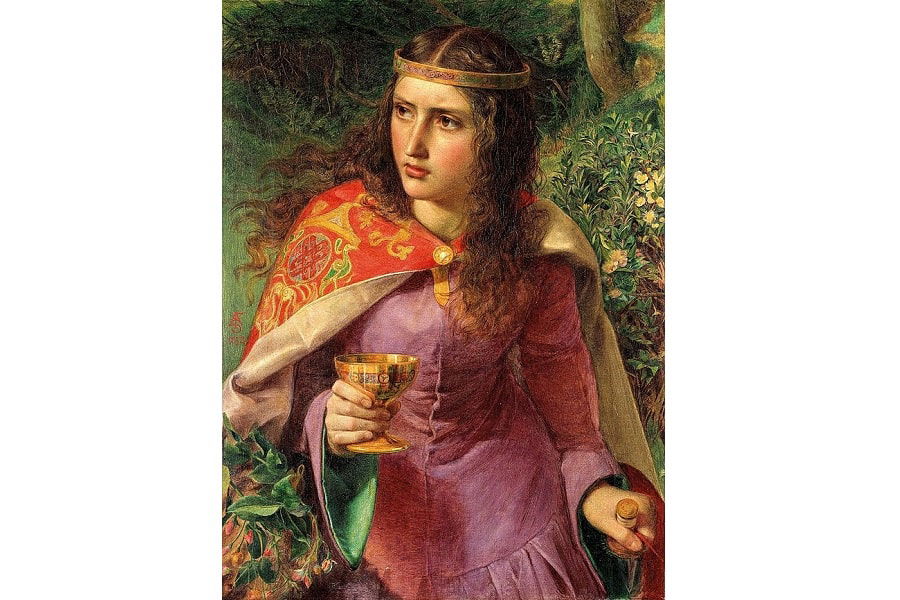
Eleanor of Aquitaine’s Reign as Queen
Becoming Queen Consort of France
Upon her marriage to Louis VII of France, Eleanor of Aquitaine assumed the role of Queen Consort, positioning her as a central figure in the French court. As Queen, Eleanor wielded significant influence and power, engaging in matters of state and actively participating in the governance of the kingdom. Her regal presence and formidable personality commanded respect and admiration from both the nobility and the common people [4].
Cultural Influence and Patronage
Eleanor’s reign as Queen Consort of France had a profound impact on the cultural landscape of the time, leaving a lasting legacy. She passionately embraced her role as a patron of the arts, wholeheartedly supporting and nurturing a wide array of talented artists, poets, and musicians. Through her unwavering dedication, she transformed the royal court into a vibrant hub of artistic expression and intellectual exploration [4].
Eleanor’s influence encompassed various artistic domains, including literature, music, and visual arts. Her deep love for literature and thirst for knowledge inspired the creation of literary works that celebrated the ideals of courtly life, chivalry, and romanticism. Writers and poets flourished under her patronage, producing captivating pieces that not only entertained but also shaped the cultural ethos of the era [5].
One of the most significant contributions of Eleanor’s patronage was in the realm of music. Her court became a haven for renowned troubadours, revered composers, and performers who were instrumental in the development of the troubadour tradition.
Marriage to Henry II of England: An Alliance of Empires

Following the annulment of her marriage to Louis VII, Eleanor married Henry II, Duke of Normandy and later King of England. This union brought together the vast realms of Aquitaine and England, solidifying Eleanor’s position as the Queen of England and bestowing her with newfound power and influence [2].
READ MORE: In Search of Origins: Who Invented England and How?
Eleanor’s marriage to Henry II marked a period of political alliance and expansion for both Aquitaine and England. As Queen Consort of England, Eleanor played an active role in supporting Henry II’s policies, participating in diplomatic endeavors, and contributing to the governance of the kingdom. Her intelligence, charisma, and strong personality made her an invaluable asset to Henry II’s reign [3].
Eleanor’s reign as Queen Consort of France and later as Queen Consort of England shaped her image as a formidable and influential figure. Her patronage of the arts, cultural pursuits, and political involvement set her apart as a queen who defied traditional expectations, leaving an enduring legacy as a trailblazer and a champion of courtly ideals [3].
The Imprisonment of Eleanor: Unraveling the Reasons
The imprisonment of Eleanor of Aquitaine by her husband, Henry II, can be traced back to the deteriorating relationship between the royal couple. Their marriage, initially a union of political convenience, became strained over time due to a multitude of factors. Eleanor’s strong personality and desire for independence clashed with Henry’s dominant and ambitious nature. Their conflicting interests and ambitions led to frequent disagreements and tensions within their marriage [2].
Additionally, Henry’s infidelities and his open favoritism towards his mistress, Rosamund Clifford, further strained their relationship. Eleanor’s resentment towards Henry’s behavior and his disregard for their marital vows created a growing rift between them. These strained relations laid the groundwork for the events that would ultimately lead to her imprisonment [4].
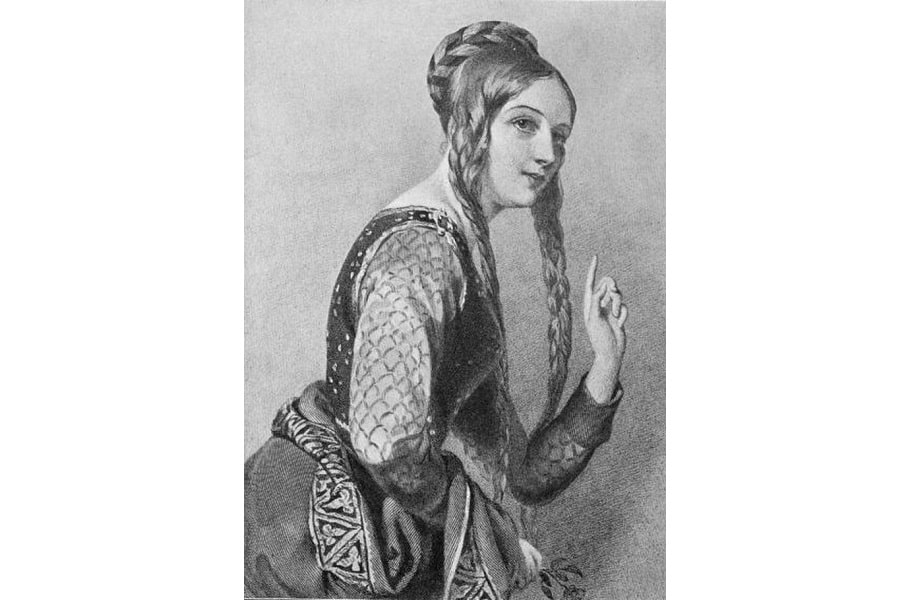
Revolt and Rebellion
Eleanor’s imprisonment was also a result of her active involvement in the revolt and rebellion of her sons against Henry’s rule. Eleanor supported her sons, particularly Richard the Lionheart and Henry the Young King [1], in their attempts to challenge their father’s authority and claim their own power. These rebellions were driven by a combination of personal grievances, territorial ambitions, and the desire to assert their own independence.
Eleanor’s support for her sons’ rebellions and her strategic alliances with other nobles who opposed Henry’s reign were seen as acts of treason and betrayal by Henry [5]. Her involvement posed a significant threat to his control over the Angevin Empire and his consolidation of power. To neutralize this threat and reassert his authority, Henry made the decision to imprison Eleanor, effectively silencing her and diminishing her influence [4].
Symbolic Confinement and Power Play
Eleanor’s imprisonment went beyond a mere act of physical confinement. It was a deliberate power play by Henry to assert his dominance and authority over her. By imprisoning Eleanor, Henry aimed to undermine her position as Queen Consort and strip away her agency. The symbolic nature of her confinement served as a warning to other noblewomen and potential challengers to Henry’s rule, reinforcing the patriarchal norms of the time [3].
Furthermore, Eleanor’s captivity had broader political implications. It demonstrated to other rulers and nobles that Henry was willing to take extreme measures to maintain control and suppress any opposition. The imprisonment of such a prominent and influential queen consort sent a strong message throughout the medieval world, solidifying Henry’s reputation as a formidable ruler and deterring potential dissent [6].
Eleanor’s imprisonment also had tangible consequences for the balance of power within the Angevin Empire. With her confinement, Henry effectively gained control over her vast territories, including Aquitaine, thereby consolidating his hold over the realm. By limiting Eleanor’s influence and curbing her ability to exert her own power, Henry secured his position as the undisputed ruler of the empire [6].
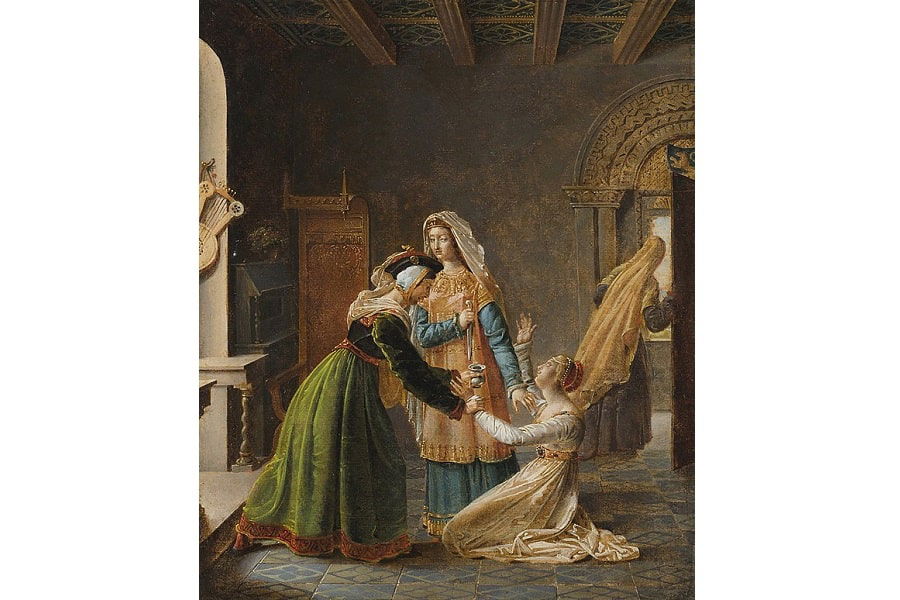
The Imprisonment of Eleanor: Unraveling a Royal Rift
Eleanor’s imprisonment spanned a considerable duration, lasting for approximately 15 years. She was held captive in various locations, including castles and abbeys, with limited freedom and contact with the outside world. While confined, Eleanor’s influence and involvement in political matters were severely curtailed, as Henry II aimed to silence her voice and diminish her ability to challenge his authority [5].
The circumstances of Eleanor’s captivity varied throughout the years, with some periods being more restrictive than others. Despite the hardships she endured, Eleanor’s spirit remained unbroken, and her reputation as a formidable and resilient queen endured even in her confinement [2].
The imprisonment of Eleanor of Aquitaine stands as a symbol of the complexities and power dynamics within medieval marriages and the political machinations of the time. It serves as a testament to the challenges faced by powerful women in positions of authority and the lengths to which rulers would go to maintain control over their realms [3].
Eleanor of Aquitaine’s Final Years
The Death of Henry II and Eleanor’s Liberation
The final years of Eleanor of Aquitaine’s life were marked by significant events that would shape her legacy. Following the death of her husband, Henry II, in 1189, Eleanor found herself once again free from the constraints of confinement. With the ascension of her son Richard the Lionheart to the throne of England, Eleanor’s liberation from captivity was accompanied by a renewed sense of purpose and agency [5].
The passing of Henry II marked a turning point for Eleanor. After years of confinement and limited involvement in political affairs, she emerged from the shadows to actively participate in the governance of the realm [6]. As a respected matriarch and influential figure, Eleanor’s voice carried weight and commanded attention. Her experience, wisdom, and strategic acumen made her an indispensable advisor to her son Richard and a guiding force in the Angevin Empire.
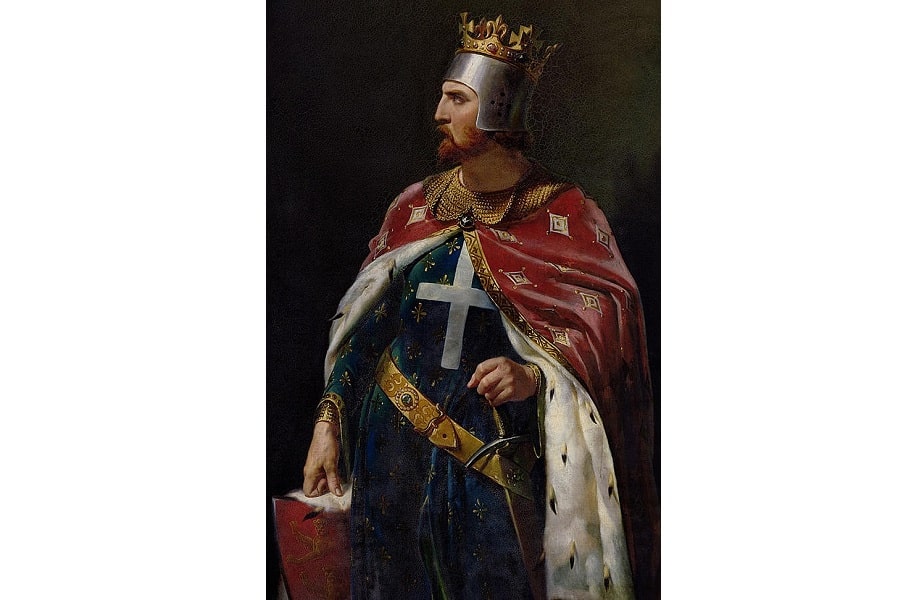
Influence on Her Children and Succession
One of the defining aspects of Eleanor’s final years was her influence on her children and the impact she had on their reigns and the succession of power. As a mother, Eleanor played a pivotal role in shaping the destinies of her children, many of whom would go on to become notable figures in history [2].
Her son Richard the Lionheart inherited her adventurous spirit and determination. Eleanor’s influence on Richard was evident in his pursuit of military glory, his commitment to the Crusades, and his reputation as a charismatic leader. Despite their occasional disagreements, Eleanor’s guidance and counsel were instrumental in Richard’s success as a warrior king.
READ MORE: Warrior Women from Around the World: History and Myth
Similarly, Eleanor’s influence extended to her son John, who would later become King of England. Her support and guidance during his formative years contributed to his development as a ruler. Eleanor’s keen political instincts and her efforts to secure advantageous marriages for her daughters also played a significant role in shaping the succession and the future of the Angevin Empire [6].
Eleanor’s unwavering commitment to her family’s interests ensured a smooth transition of power and secured her children’s positions as rulers. Her influence on her descendants extended beyond her own reigns and left a lasting impact on the course of history.
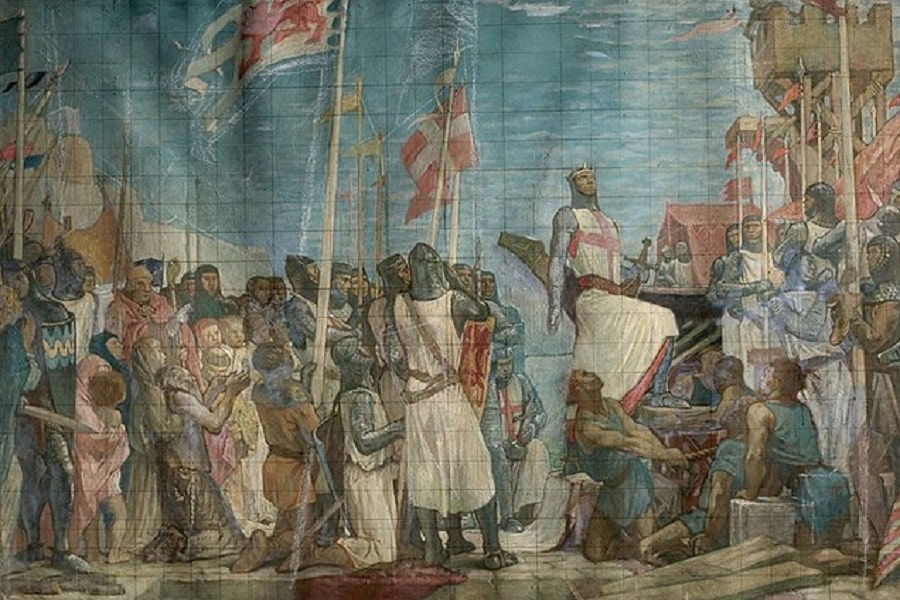
The Mysterious End: Eleanor of Aquitaine’s Death
The Final Years and Retreat from Public Life
In the later years of Eleanor of Aquitaine’s life, she gradually retreated from the public sphere and sought solace in seclusion. After the death of her husband, Henry II, and the subsequent release from imprisonment [3], Eleanor embraced a more contemplative lifestyle, some historians claim. She withdrew from the complexities of courtly affairs and political maneuverings, choosing to focus on introspection and spiritual pursuits.
During this period, Eleanor found solace in religious devotion and sought refuge in various religious communities. She became deeply involved in acts of piety, philanthropy, and the establishment of religious foundations. These activities not only provided Eleanor with a sense of purpose but also allowed her to leave a lasting legacy of her faith and commitment to charitable causes [2].
Eleanor’s Final Days and Legacy
The circumstances surrounding Eleanor of Aquitaine’s death remain shrouded in mystery. It is believed that she passed away in the year 1204, at the age of approximately 82, but the exact details of her demise are unclear [2]. Some historical accounts suggest that Eleanor died peacefully in her sleep, while others propose that she succumbed to an illness or age-related complications [6].
Regardless of the precise circumstances, Eleanor’s passing marked the end of an era. Her death signaled the conclusion of a remarkable life that spanned nearly nine decades, encompassing periods of power, struggle, and influential reigns. She left behind a rich legacy of political savvy, cultural patronage, and the enduring image of a formidable queen [4].
Eleanor’s legacy extended beyond her own lifetime. Her descendants continued to shape the course of history, and her influence on the realms of Aquitaine, France, and England endured for generations to come. Through her marriages, alliances, and strategic maneuverings, Eleanor played a pivotal role in shaping the political landscape of medieval Europe.
References
- Turner, Ralph V. “Eleanor of Aquitaine: Queen of France, Queen of England.”
- Weir, Alison. “Eleanor of Aquitaine: By the Wrath of God, Queen of England.”
- Kelly, Amy. “Eleanor of Aquitaine and the Four Kings.”
- Wheeler, Bonnie, and Parsons, John Carmi. “Eleanor of Aquitaine: Lord and Lady.”
- Meade, Marion. “Eleanor of Aquitaine: A Biography.”
- Owen, D. D. R. “Eleanor of Aquitaine: Queen and Legend.”
- Markale, Jean. “Eleanor of Aquitaine: Queen of the Troubadours.”